| Season Start: | 04 September 1976 | | Season End: | 02 April 1977 | | Season Length: | 31 Weeks | | Actual Weeks: | 26 Weeks | | Writers: | Bob Baker, Chris Boucher, Dave Martin, Louis Marks, Robert Banks Stewart and Robert Holmes | | Directors: | David Maloney, Lennie Mayne, Michael Briant, Pennant Roberts and Rodney Bennett | | Producer: | Philip Hinchcliffe | | Script Editor: | Robert Holmes | | Visual Effects: | Colin Mapson, Ian Scoones, Len Hutton, Mat Irvine, Michealjohn Harris, Peter Day and Richard Conway | | Title Sequence: | Bernard Lodge | | Title Music: | Ron Grainer and the BBC Radiophonic Workshop. Arranged by Delia Derbyshire |
|
Incarnation of the Doctor: |
The Fourth Doctor
|
| Number of
Companions: |
2 |
| The
Companions: |
Sarah Jane Smith (Departs) and Leela (Joins)
|
| Number of
Stories: |
6
|
| Number of
Incomplete/Missing Stories: |
0
|
| Number of
Episodes: |
26
|
| Number of
Incomplete/Missing Episodes: |
0
|
| Percentages: |
| Full Stories Held | 100% | | Episodes Held | 100% |
|
| Doctor Who Magazine Poll (1998) | | | Doctor Who Magazine Poll (2009) | | | Doctor Who Magazine Poll (2014) | |
|
 'You humans have got such limited, little minds. I don't know why I like you so much.' 'You humans have got such limited, little minds. I don't know why I like you so much.'
The Doctor
(The Masque of Mandragora) |
|
|
|
|
| |
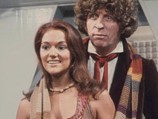 |
| Leela and The Doctor |
|
 Season Fourteen consisted of what had become the standard 6 stories containing 26 episodes. This format of 5 stories having 4 episodes each with the final sixth story having 6 episodes would continue until Season Seventeen – the penultimate season for the Fourth Doctor. Season Fourteen consisted of what had become the standard 6 stories containing 26 episodes. This format of 5 stories having 4 episodes each with the final sixth story having 6 episodes would continue until Season Seventeen – the penultimate season for the Fourth Doctor.
 Season Fourteen though is notable for three things: the departure of Sarah Jane Smith in "The Hand of Fear"; the first and only story in the original series where The Doctor has no companion and for being set entirely on Gallifrey in "The Deadly Assassin"; and for introducing Leela, the leather clad savage in "The Face of Evil". Season Fourteen though is notable for three things: the departure of Sarah Jane Smith in "The Hand of Fear"; the first and only story in the original series where The Doctor has no companion and for being set entirely on Gallifrey in "The Deadly Assassin"; and for introducing Leela, the leather clad savage in "The Face of Evil".
 The departure of companion Sarah Jane Smith, played by Elisabeth Sladen, at the very end of "The Hand of Fear" created very poignant moment in the history of the show. It also made her chronologically the longest-serving Doctor Who companion (though the Second Doctor companion Jamie McCrimmon) actually had more episodes). Originally Sarah Jane Smith was due to die at the end of a planned Douglas Camfield story about the Foreign Legion but to Elisabeth Sladen's delight she was not killed off when "The Hand of Fear" – the story that replaced it – was made. The departure of companion Sarah Jane Smith, played by Elisabeth Sladen, at the very end of "The Hand of Fear" created very poignant moment in the history of the show. It also made her chronologically the longest-serving Doctor Who companion (though the Second Doctor companion Jamie McCrimmon) actually had more episodes). Originally Sarah Jane Smith was due to die at the end of a planned Douglas Camfield story about the Foreign Legion but to Elisabeth Sladen's delight she was not killed off when "The Hand of Fear" – the story that replaced it – was made.
 Upon her departure, Elisabeth Sladen returned to other work, returning in the 1980 spin-off "K-9 and Company," the 1983 Twentieth Anniversary story "The Five Doctors" and the Thirtieth-Anniversary Children In Need special "Dimensions in Time", in 1993. She also worked on two Jon Pertwee Doctor Who radio dramas, "The Paradise of Death"", in 1993, and "The Ghosts of N-Space", in 1995 and she also returned to the role for Big Finish Productions’ nine part Sarah Jane Smith Audio series. Then in 2006 she returned to the show in the Tenth Doctor story "School Reunion" (in which Sarah Jane Smith's departure point was revealed to be Aberdeen rather than Croydon), and her own spin-off series The Sarah Jane Adventures. She also returned in the 2008 Tenth Doctor story "The Stolen Earth/Journey's End", playing a major role as a companion again alongside Mickey Smith, Captain Jack Harkness, Rose Tyler, Jackie Tyler, Martha Jones and Donna Noble. Finally, she made a cameo at the conclusion of the Tenth Doctor's last story "The End of Time". Upon her departure, Elisabeth Sladen returned to other work, returning in the 1980 spin-off "K-9 and Company," the 1983 Twentieth Anniversary story "The Five Doctors" and the Thirtieth-Anniversary Children In Need special "Dimensions in Time", in 1993. She also worked on two Jon Pertwee Doctor Who radio dramas, "The Paradise of Death"", in 1993, and "The Ghosts of N-Space", in 1995 and she also returned to the role for Big Finish Productions’ nine part Sarah Jane Smith Audio series. Then in 2006 she returned to the show in the Tenth Doctor story "School Reunion" (in which Sarah Jane Smith's departure point was revealed to be Aberdeen rather than Croydon), and her own spin-off series The Sarah Jane Adventures. She also returned in the 2008 Tenth Doctor story "The Stolen Earth/Journey's End", playing a major role as a companion again alongside Mickey Smith, Captain Jack Harkness, Rose Tyler, Jackie Tyler, Martha Jones and Donna Noble. Finally, she made a cameo at the conclusion of the Tenth Doctor's last story "The End of Time".
 "The Deadly Assassin", as well being the first and only story in the original series where The Doctor has no companion and for being set entirely on Gallifrey, is also famous as for featuring a ‘revisionist’ portrayal of the Time Lords, as well as revealing much more about them. "The Deadly Assassin" also featured the return of The Master in a degenerated new form. After the death of Roger Delgado, who sadly was tragically killed in an automobile accident in Turkey while travelling to a location shoot for a film, it was felt that the 1973 Third Doctor story "Frontier in Space" would be the last story that this character would appear in the show. Thankfully this was not to be the case for this iconic Doctor Who character. The Master in "The Deadly Assassin" was played by Peter Pratt – his only appearance in the role. But despite Peter Pratt only playing the part this once, and The Master’s very decrepit state, this would not be the last time that The Master would appear in the show. "The Deadly Assassin", as well being the first and only story in the original series where The Doctor has no companion and for being set entirely on Gallifrey, is also famous as for featuring a ‘revisionist’ portrayal of the Time Lords, as well as revealing much more about them. "The Deadly Assassin" also featured the return of The Master in a degenerated new form. After the death of Roger Delgado, who sadly was tragically killed in an automobile accident in Turkey while travelling to a location shoot for a film, it was felt that the 1973 Third Doctor story "Frontier in Space" would be the last story that this character would appear in the show. Thankfully this was not to be the case for this iconic Doctor Who character. The Master in "The Deadly Assassin" was played by Peter Pratt – his only appearance in the role. But despite Peter Pratt only playing the part this once, and The Master’s very decrepit state, this would not be the last time that The Master would appear in the show.
 The most significant element of this season was the introduction of new companion Leela - the Sevateem leather clad savage played by Louise Jameson. Originally Leela was only due to appear in a couple of stories. However, during the recording of this season’s final story, "The Talons of Weng-Chiang", Producer Philip Hinchcliffe’s successor Graham Williams gradually took over the reigns and he approached Louise Jameson with an offer to stay on for Season Fifteen. This however, was a decision at odds with a promise Philip Hinchcliffe had made to Tom Baker that the character of Leela would be written out of the show at the conclusion of Season Fourteen. Tom Baker was of the opinion that the character was too violent for the show and would have preferred to carry on without a companion at all. Louise Jameson was initially reluctant to continue, mainly because of her frosty relationship with Tom Baker and the brown contact lenses she was compelled to wear. But when Graham Williams offered to relinquish the need for her to wear contact lenses (which were used to change the colour of her eyes) Louise Jameson agreed to sign a contract for the whole of Season Fifteen. The most significant element of this season was the introduction of new companion Leela - the Sevateem leather clad savage played by Louise Jameson. Originally Leela was only due to appear in a couple of stories. However, during the recording of this season’s final story, "The Talons of Weng-Chiang", Producer Philip Hinchcliffe’s successor Graham Williams gradually took over the reigns and he approached Louise Jameson with an offer to stay on for Season Fifteen. This however, was a decision at odds with a promise Philip Hinchcliffe had made to Tom Baker that the character of Leela would be written out of the show at the conclusion of Season Fourteen. Tom Baker was of the opinion that the character was too violent for the show and would have preferred to carry on without a companion at all. Louise Jameson was initially reluctant to continue, mainly because of her frosty relationship with Tom Baker and the brown contact lenses she was compelled to wear. But when Graham Williams offered to relinquish the need for her to wear contact lenses (which were used to change the colour of her eyes) Louise Jameson agreed to sign a contract for the whole of Season Fifteen.
 The overall gothic ambience of the season, which was a hallmark of the Philip Hinchcliffe/Robert Holmes era, was helped by the introduction of the TARDIS' secondary Console Room, which was used in lieu of the traditional Console Room during the whole of this season. The gothic feel was very much seen in the final story of the season, "The Talons of Weng-Chiang", which is considered to be one of the best stories of the show. This story also was John Nathan-Turner's first involvement in the show as Production Unit Manager. John Nathan-Turner has since become a legendary member of the Doctor Who team as he would later succeed Graham Williams as the show's Producer from 1980 to 1989 and so the final Producer until the show was revived in 2005. The overall gothic ambience of the season, which was a hallmark of the Philip Hinchcliffe/Robert Holmes era, was helped by the introduction of the TARDIS' secondary Console Room, which was used in lieu of the traditional Console Room during the whole of this season. The gothic feel was very much seen in the final story of the season, "The Talons of Weng-Chiang", which is considered to be one of the best stories of the show. This story also was John Nathan-Turner's first involvement in the show as Production Unit Manager. John Nathan-Turner has since become a legendary member of the Doctor Who team as he would later succeed Graham Williams as the show's Producer from 1980 to 1989 and so the final Producer until the show was revived in 2005.
 Being Philip Hinchcliffe’s final season as Producer, and with Script Editor Robert Holmes also soon to leave the show, this season was the last, of three seasons, where these two key figures were in charge of the show. The storylines covered certainly continued to expand the show's core audience - especially in broadening the show's appeal to adults with the introduction of Leela and the more portrayal of violence and death resulting in even more complaints from Mary Whitehouse's National Viewers' and Listeners' Association - especially with the broadcast of "The Deadly Assassin". Unfortunately, these complaints were so strong that behind the scenes it was decided that Philip Hinchcliffe should move on from the series, and that his successor should create a much more light-hearted vision of the show. Being Philip Hinchcliffe’s final season as Producer, and with Script Editor Robert Holmes also soon to leave the show, this season was the last, of three seasons, where these two key figures were in charge of the show. The storylines covered certainly continued to expand the show's core audience - especially in broadening the show's appeal to adults with the introduction of Leela and the more portrayal of violence and death resulting in even more complaints from Mary Whitehouse's National Viewers' and Listeners' Association - especially with the broadcast of "The Deadly Assassin". Unfortunately, these complaints were so strong that behind the scenes it was decided that Philip Hinchcliffe should move on from the series, and that his successor should create a much more light-hearted vision of the show.
 Despite these complaints this season achieved an average of 11.1 million viewers – the highest the show has achieved until this point in the show’s history. Considered to be the best season ever this is backed up by it coming first and second in two Doctor Who Magazine polls (first in 1998 and second in 2009). This season was only beaten to second place in the 2009 poll by the previous season, Season Thirteen. Ironically even though this season is one of the most popular it does not contain a single Dalek story. Despite these complaints this season achieved an average of 11.1 million viewers – the highest the show has achieved until this point in the show’s history. Considered to be the best season ever this is backed up by it coming first and second in two Doctor Who Magazine polls (first in 1998 and second in 2009). This season was only beaten to second place in the 2009 poll by the previous season, Season Thirteen. Ironically even though this season is one of the most popular it does not contain a single Dalek story.
 The conclusion of this season resulted in the end of the Philip Hinchcliffe/Robert Holmes era and even though Tom Baker would continue as the Fourth Doctor for another four years, and that he would be joined by many other companions who would accompany him in some more classic stories, the golden age of Doctor Who had come to an end. Thanks, in the opinion of many fans, to Mary Whitehouse. The conclusion of this season resulted in the end of the Philip Hinchcliffe/Robert Holmes era and even though Tom Baker would continue as the Fourth Doctor for another four years, and that he would be joined by many other companions who would accompany him in some more classic stories, the golden age of Doctor Who had come to an end. Thanks, in the opinion of many fans, to Mary Whitehouse.
 Despite this Graham Williams was about to begin his time at the helm and the show would never be the same again – especially as Season Fifteen would include the introduction of another popular companion – his electronic dog, K9. Despite this Graham Williams was about to begin his time at the helm and the show would never be the same again – especially as Season Fifteen would include the introduction of another popular companion – his electronic dog, K9.
|
|
|
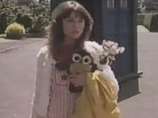 |
| Sarah Leaves the TARDIS |
|
 This season is renowned for introducing the TARDIS' secondary Console Room. Designed by Barry Newbery this Jules Verne-inspired wood-panelled set was used throughout the majority of this season. It still retained the same overall configuration that is an integral part of the TARDIS with roundels, scanner and console but had a less futuristic feel. This set was used for a number of important and memorable scenes. Namely the departure of Sarah Jane Smith and the classic scene where The Doctor attempts to explain to Leela how the inside of the TARDIS can be bigger than the outside. This season is renowned for introducing the TARDIS' secondary Console Room. Designed by Barry Newbery this Jules Verne-inspired wood-panelled set was used throughout the majority of this season. It still retained the same overall configuration that is an integral part of the TARDIS with roundels, scanner and console but had a less futuristic feel. This set was used for a number of important and memorable scenes. Namely the departure of Sarah Jane Smith and the classic scene where The Doctor attempts to explain to Leela how the inside of the TARDIS can be bigger than the outside.
 The departure of Sarah Jane Smith, at the very end of very end of "The Hand of Fear", created a very poignant moment in the history of the show. Having defeated Eldrad, a silicone-based humanoid creature, The Doctor and Sarah Jane Smith are back in the TARDIS. Sarah Jane Smith though is annoyed at The Doctor and threatens to leave. However, as she goes off to pack her things, even though she has no intention of leaving, The Doctor receives a summons from the Time Lords to return to Gallifrey. Sarah is therefore shocked when she returns to find that she has to leave anyway. After saying their goodbyes Sarah exits the TARDIS and then watches it dematerialise. Her time with The Doctor over. However, despite The Doctor telling her that the TARDIS has arrived near her home, Sarah realises that she is not in Hillview Road and may not even be in South Croydon at all… The departure of Sarah Jane Smith, at the very end of very end of "The Hand of Fear", created a very poignant moment in the history of the show. Having defeated Eldrad, a silicone-based humanoid creature, The Doctor and Sarah Jane Smith are back in the TARDIS. Sarah Jane Smith though is annoyed at The Doctor and threatens to leave. However, as she goes off to pack her things, even though she has no intention of leaving, The Doctor receives a summons from the Time Lords to return to Gallifrey. Sarah is therefore shocked when she returns to find that she has to leave anyway. After saying their goodbyes Sarah exits the TARDIS and then watches it dematerialise. Her time with The Doctor over. However, despite The Doctor telling her that the TARDIS has arrived near her home, Sarah realises that she is not in Hillview Road and may not even be in South Croydon at all…
 At the beginning of "The Robots of Death", in the TARDIS' secondary Console Room, we see Leela playing with The Doctor’s Yo-Yo not realising it is just a toy. The Doctor then tries to demonstrate to her why the TARDIS is dimensionally transcendental. To do this he uses two different sized boxes. He places the larger box on top of the TARDIS console while holding the smaller box close to Leela so making the smaller box seem larger than the small one. However, his demonstration, turns out not to be very helpful. At the end of this scene The Doctor tries to stop Leela from taking a gun, that she liberated from a Tesh at the end of the previous story, stating that if people see you mean no harm then they never heart you. Despite this Leela still follows The Doctor out of the TARDIS with her hunting knife. At the beginning of "The Robots of Death", in the TARDIS' secondary Console Room, we see Leela playing with The Doctor’s Yo-Yo not realising it is just a toy. The Doctor then tries to demonstrate to her why the TARDIS is dimensionally transcendental. To do this he uses two different sized boxes. He places the larger box on top of the TARDIS console while holding the smaller box close to Leela so making the smaller box seem larger than the small one. However, his demonstration, turns out not to be very helpful. At the end of this scene The Doctor tries to stop Leela from taking a gun, that she liberated from a Tesh at the end of the previous story, stating that if people see you mean no harm then they never heart you. Despite this Leela still follows The Doctor out of the TARDIS with her hunting knife.
 This story and the next, "The Talons of Weng-Chiang", both contain a number of must-see scenes involving Leela and The Doctor’s attempts to make her less of a savage. Even though her savagery becomes less and less in each story now and again it shows through - like in "The Talons of Weng-Chiang" where she has a meal with Professor Litefoot but has no concept of using the cutlery or the napkin provided. However, despite all The Doctor’s efforts she never loses her adept use of her hunting knife and poisonous Janus Thorns which she uses to protect not only herself but also The Doctor on a number of occasions. This story and the next, "The Talons of Weng-Chiang", both contain a number of must-see scenes involving Leela and The Doctor’s attempts to make her less of a savage. Even though her savagery becomes less and less in each story now and again it shows through - like in "The Talons of Weng-Chiang" where she has a meal with Professor Litefoot but has no concept of using the cutlery or the napkin provided. However, despite all The Doctor’s efforts she never loses her adept use of her hunting knife and poisonous Janus Thorns which she uses to protect not only herself but also The Doctor on a number of occasions.
|
|
|
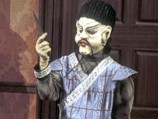 |
| Mr. Sin |
|
 Despite being one of the most popular seasons it does contain a low point. This being the opening story, "The Masque of Mandragora". It was originally planed to record this story overseas but it’s location footage was shot instead at the resort of Portmeirion, a Welsh resort village near Penrhyndeudraeth in Gwynedd. In this story the TARDIS is infiltrated by The Mandragora Helix, a wave of Mandragora energy, which then gets the TARDIS to take it, along with The Doctor and Sarah Jane Smith, to 15th century Earth. On arrival The Mandragora Helix starts to cause havoc in the Dukedom of San Martino before it comes into contact with the mysterious ancient cult of Demos – which is the main aspect that lets this story down – especially with regards to Sarah Jane Smith who once more is hypnotised and is threatened with becoming a human sacrifice to appease a god. Despite being one of the most popular seasons it does contain a low point. This being the opening story, "The Masque of Mandragora". It was originally planed to record this story overseas but it’s location footage was shot instead at the resort of Portmeirion, a Welsh resort village near Penrhyndeudraeth in Gwynedd. In this story the TARDIS is infiltrated by The Mandragora Helix, a wave of Mandragora energy, which then gets the TARDIS to take it, along with The Doctor and Sarah Jane Smith, to 15th century Earth. On arrival The Mandragora Helix starts to cause havoc in the Dukedom of San Martino before it comes into contact with the mysterious ancient cult of Demos – which is the main aspect that lets this story down – especially with regards to Sarah Jane Smith who once more is hypnotised and is threatened with becoming a human sacrifice to appease a god.
 There are three contenders for the story that is the highest point of this season: The first being "The Deadly Assassin" which has The Master once more as the villain. This story also greatly expands on Time Lord society, that had only been hinted at in "The Three Doctors" and only briefly glanced in "The War Games". In this story The Doctor is, for the first time, travelling alone and involved in a story set solely on the Time Lord’s home planet, Gallifrey. But it is the serine scenes that occur inside the Matrix that standout the most. On entering the Matrix, The Doctor finds himself in a forbidding landscape where danger is everywhere. From a masked samurai warrior, a masked surgeon holding an extremely large hypodermic needle, finding himself in the path of a runaway train and then strafed by machine gun fire from a biplane being flown by a masked pilot. After surviving all these attempts on his life The Doctor ends up in a life-or-death struggle, and having to fend of the mysterious hooded opponent who tries to drown The Doctor. It is finally revealed that his opponent is Chancellor Goth who The Master has been using as a puppet. There are three contenders for the story that is the highest point of this season: The first being "The Deadly Assassin" which has The Master once more as the villain. This story also greatly expands on Time Lord society, that had only been hinted at in "The Three Doctors" and only briefly glanced in "The War Games". In this story The Doctor is, for the first time, travelling alone and involved in a story set solely on the Time Lord’s home planet, Gallifrey. But it is the serine scenes that occur inside the Matrix that standout the most. On entering the Matrix, The Doctor finds himself in a forbidding landscape where danger is everywhere. From a masked samurai warrior, a masked surgeon holding an extremely large hypodermic needle, finding himself in the path of a runaway train and then strafed by machine gun fire from a biplane being flown by a masked pilot. After surviving all these attempts on his life The Doctor ends up in a life-or-death struggle, and having to fend of the mysterious hooded opponent who tries to drown The Doctor. It is finally revealed that his opponent is Chancellor Goth who The Master has been using as a puppet.
 The second candidate for the highest point of this season is the Agatha Christie influenced story "The Robots of Death". In this story The Doctor and his new companion Leela arrive inside a massive sandminer which is slowly travelling over of a vast, barren desert, on a distant planet, scraping its surface in search of precious minerals. The sandminer is being run by a small human crew with the aid of numerous robots split into three classes: black ‘Dums’ that cannot speak, pale green ‘Vocs’, and a silver ‘Super Voc’ which controls all the ‘Dums’ and ‘Vocs’. But also aboard is robot fanatic who becomes a murderer. The Doctor joins forces with one of the robots who turns out not to be an ordinary Dum. D84 is in fact a Super Voc posing as a Dum working for the mining company to track down a scientist called Taren Capel who is the most likely candidate for all the human deaths on the sandminer. This story is considered by many fans to be a classic and arguably one of the show’s most popular stories. The second candidate for the highest point of this season is the Agatha Christie influenced story "The Robots of Death". In this story The Doctor and his new companion Leela arrive inside a massive sandminer which is slowly travelling over of a vast, barren desert, on a distant planet, scraping its surface in search of precious minerals. The sandminer is being run by a small human crew with the aid of numerous robots split into three classes: black ‘Dums’ that cannot speak, pale green ‘Vocs’, and a silver ‘Super Voc’ which controls all the ‘Dums’ and ‘Vocs’. But also aboard is robot fanatic who becomes a murderer. The Doctor joins forces with one of the robots who turns out not to be an ordinary Dum. D84 is in fact a Super Voc posing as a Dum working for the mining company to track down a scientist called Taren Capel who is the most likely candidate for all the human deaths on the sandminer. This story is considered by many fans to be a classic and arguably one of the show’s most popular stories.
 In the final story of this season, "The Talons of Weng-Chiang", The Doctor takes Leela to Victorian London, at the end of the 19th Century, so that she can experience how her ancestors lived. This ends up with them both teaming up with two amateur sleuths, Professor Litefoot and Henry Gordon Jago, to stop Weng-Chiang, who is in fact Magnus Greel, a war criminal from the 51st Century. They have to contend with a number of missing young women, a number of deaths, giant rates roaming the sewers and the deadly Mr. Sin, Li H’sen Chang’s ventriloquist doll which is actually an advanced computerised children’s plaything from the future with the cerebral cortex of a pig. This story has some memorable atmospheric scenes. Most memorable are those that occur in the fog bound London and inside the Palace Theatre where a real-life theatre in Northampton was used. Like "The Robots of Death" this story is also considered to be one of the best stories of the show and all three resulted in a very enjoyable season. In the final story of this season, "The Talons of Weng-Chiang", The Doctor takes Leela to Victorian London, at the end of the 19th Century, so that she can experience how her ancestors lived. This ends up with them both teaming up with two amateur sleuths, Professor Litefoot and Henry Gordon Jago, to stop Weng-Chiang, who is in fact Magnus Greel, a war criminal from the 51st Century. They have to contend with a number of missing young women, a number of deaths, giant rates roaming the sewers and the deadly Mr. Sin, Li H’sen Chang’s ventriloquist doll which is actually an advanced computerised children’s plaything from the future with the cerebral cortex of a pig. This story has some memorable atmospheric scenes. Most memorable are those that occur in the fog bound London and inside the Palace Theatre where a real-life theatre in Northampton was used. Like "The Robots of Death" this story is also considered to be one of the best stories of the show and all three resulted in a very enjoyable season.
|
|
|
|
|
| |
The Firsts:
 The first appearance of the TARDIS's wood panelled secondary console room, designed by Barry Newbury. (The Masque of Mandragora) The first appearance of the TARDIS's wood panelled secondary console room, designed by Barry Newbury. (The Masque of Mandragora)
 The first time that The Doctor has no travelling companion. (The Deadly Assassin) The first time that The Doctor has no travelling companion. (The Deadly Assassin)
 The first story to state that a Time Lord can only have twelve regenerations and so therefore thirteen incarnations. (The Deadly Assassin) The first story to state that a Time Lord can only have twelve regenerations and so therefore thirteen incarnations. (The Deadly Assassin)
 The introduction of new companion Leela played by Louise Jameson. (The Face of Evil) The introduction of new companion Leela played by Louise Jameson. (The Face of Evil)
 The first Doctor Who story to be directed by Pennant Roberts. (The Face of Evil) The first Doctor Who story to be directed by Pennant Roberts. (The Face of Evil)
 The first, and only, story that the Fourth Doctor does not wear his famous trademark long scarf. (The Talons of Weng-Chiang) The first, and only, story that the Fourth Doctor does not wear his famous trademark long scarf. (The Talons of Weng-Chiang)
 John Nathan-Turner's first involvement in the show as Production Unit Manager. (The Talons of Weng-Chiang) John Nathan-Turner's first involvement in the show as Production Unit Manager. (The Talons of Weng-Chiang)
|
| |
The Lasts (Subject to Future Stories):
| |
| Doctor Who CMS Magazine (In Vision) | Issue 23: Season 14 Overview - (Released: March 1990) | | Doctor Who Magazine - Article | Issue 138 - (Released: July 1988) | | Doctor Who Magazine - Article | Issue 139 - (Released: August 1988) | | Doctor Who Magazine - Episode Guide | Issue 151 - (Released: August 1989) | | Doctor Who Magazine - Article | Issue 290 - (Released: May 2000) | | Doctor Who Magazine - Countdown to 50 | Issue 443 - (Released: February 2012) | | Doctor Who Magazine - Article | Issue 550 - (Released: May 2020) |
| Title | Release Date (UK) | Format | Source | Companions | | Doctor Who and The Pescatons | July 1976 | Audio/Novel | Audio Stories/Miscellaneous Stories | Sarah Jane Smith | | UNITed We Fall | July 1996 | Short Story | Decalog 3: Consequences | The Brigadier | | Eye of Heaven | February 1998 | Novel | The Past Doctors Stories | Leela | | Old Flames | March 1998 | Short Story | Short Trips | Sarah Jane Smith | | Last Man Running | September 1998 | Novel | The Past Doctors Stories | Leela | | One Bad Apple | March 1999 | Short Story | More Short Trips | Leela | | Millennium Shock | May 1999 | Novel | The Past Doctors Stories | Sarah Jane Smith and Harry Sullivan | | Corpse Marker | November 1999 | Novel | The Past Doctors Stories | Leela | | The Android Maker of Calderon IV | March 2000 | Short Story | Short Trips and Side Steps | Sarah Jane Smith | | Asylum | May 2001 | Novel | The Past Doctors Stories | Nyssa | | Exploration Earth: The Time Machine | July 2001 | Audio | Audio Stories | Sarah Jane Smith | | Psi-ence Fiction | September 2001 | Novel | The Past Doctors Stories | Leela | | Drift | February 2002 | Novel | The Past Doctors Stories | Leela | | Ghost Ship | August 2002 | Novel | Doctor Who Novellas | | | Eternity | December 2003 | Short Story | The Big Finish Short Trips 5: Steel Skies | Sarah Jane Smith | | The Bushranger's Story | June 2004 | Short Story | The Big Finish Short Trips 8: Repercussions | Leela | | The Northern Heights | June 2004 | Short Story | The Big Finish Short Trips 7: Life Science | | | The Baron Wastes | October 2004 | Short Story | The Big Finish Short Trips 10: 2040 | | | It’s a Lovely Day Tomorrow | December 2004 | Short Story | The Big Finish Short Trips 11: A Christmas Treasury | Leela | | Match of the Day | January 2005 | Novel | The Past Doctors Stories | Leela | | (5:10) The Sooner the Better | June 2005 | Short Story | The Big Finish Short Trips 13: A Day in the Life | Leela | | Earth | September 2005 | Short Story | The Big Finish Short Trips 14: The Solar System | | | The Prodigal Sun | December 2005 | Short Story | The Big Finish Short Trips 15: The History of Christmas | Leela | | Ode to Joy | December 2005 | Short Story | The Big Finish Short Trips 15: The History of Christmas | | | Callahuanca | December 2005 | Short Story | The Big Finish Short Trips 15: The History of Christmas | | | The Very Last Picture Show | March 2006 | Short Story | The Big Finish Short Trips 16: Farewells | Leela | | Direct Action | September 2006 | Short Story | The Big Finish Short Trips 17: The Centenarian | | | In Case of Emergencies | August 2007 | Short Story | The Big Finish Short Trips 21: Snapshots | | | My Hero | August 2007 | Short Story | The Big Finish Short Trips 21: Snapshots | | | The Catalyst | October 2007 | Audio | The Big Finish Audio Stories (Companion Chronicles) | Leela | | The Nobility of Faith | December 2007 | Short Story | The Big Finish Short Trips 22: The Ghosts of Christmas | | | Stanley | March 2008 | Short Story | The Big Finish Short Trips 23: Defining Patterns | Leela | | Mutiny | March 2008 | Short Story | The Big Finish Short Trips 23: Defining Patterns | Harry Sullivan | | Only Connect | July 2008 | Short Story | The Big Finish Short Trips 25: Transmissions | | | Empathy Games | October 2008 | Audio | The Big Finish Audio Stories (Companion Chronicles) | Leela | | Foe from the Future | January 2012 | Audio | The Big Finish Audio Stories (The Lost Stories) | Leela | | Destination Nerva | January 2012 | Audio | The Big Finish Audio Stories (The Fourth Doctor Stories) | Leela | | The Renaissance Man | February 2012 | Audio | The Big Finish Audio Stories (The Fourth Doctor Stories) | Leela | | The Wrath of the Iceni | March 2012 | Audio | The Big Finish Audio Stories (The Fourth Doctor Stories) | Leela | | Energy of the Daleks | April 2012 | Audio | The Big Finish Audio Stories (The Fourth Doctor Stories) | Leela | | Trail of the White Worm | May 2012 | Audio | The Big Finish Audio Stories (The Fourth Doctor Stories) | Leela | | The Oseidon Adventure | June 2012 | Audio | The Big Finish Audio Stories (The Fourth Doctor Stories) | Leela | | The King of Sontar | January 2014 | Audio | The Big Finish Audio Stories (The Fourth Doctor Stories) | Leela | | White Ghosts | February 2014 | Audio | The Big Finish Audio Stories (The Fourth Doctor Stories) | Leela | | The Crooked Man | March 2014 | Audio | The Big Finish Audio Stories (The Fourth Doctor Stories) | Leela | | The Evil One | April 2014 | Audio | The Big Finish Audio Stories (The Fourth Doctor Stories) | Leela | | Last of the Colophon | April 2014 | Audio | The Big Finish Audio Stories (The Fourth Doctor Stories) | Leela | | Destroy the Infinite | April 2014 | Audio | The Big Finish Audio Stories (The Fourth Doctor Stories) | Leela | | The Abandoned | July 2014 | Audio | The Big Finish Audio Stories (The Fourth Doctor Stories) | Leela | | Zygon Hunt | August 2014 | Audio | The Big Finish Audio Stories (The Fourth Doctor Stories) | Leela |
|
|
| |
The Doctor and Companions| | 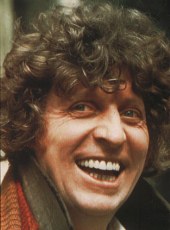 | | The Fourth Doctor |
|
| | | | |
 | | Sarah Jane Smith |
| | 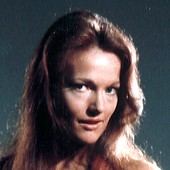 | | Leela |
| | | | |
|
On Release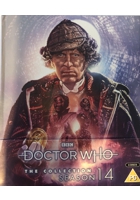 | | The Collection Season 14 Limited Edition Blu-Ray Cover |

VIDEO |
| | 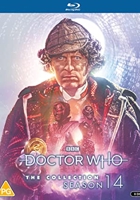 | | The Collection Season 14 Standard Edition Blu-Ray Cover |

VIDEO |
| | | | |
Magazines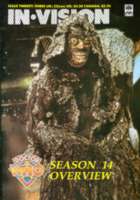 | | Doctor Who CMS Magazine (In Vision): Issue 23: Season 14 Overview |
|  | | Doctor Who Magazine - Article: Issue 138 |
|  | | Doctor Who Magazine - Article: Issue 139 |
| 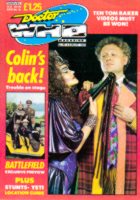 | | Doctor Who Magazine - Episode Guide: Issue 151 |
| | | | |  | | Doctor Who Magazine - Article: Issue 290 |
| 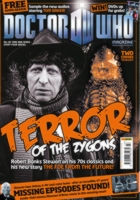 | | Doctor Who Magazine - Countdown to 50: Issue 443 |
| 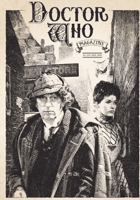 | | Doctor Who Magazine - Article: Issue 550 |
|
|
|
|
| |
| |
|
| |
| |
|
| Doctor Who is the copyright of the British Broadcasting
Corporation. No infringements intended. This site is not endorsed by the BBC or
any representatives thereof. |
|